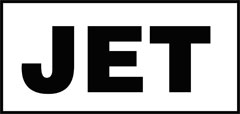
By//Kyra Kyles, Senior Editor, JET Magazine
Let’s face facts. Most kids do not understand the value of money. Why do you think retailers place toys and candy right near the checkout aisles? As any embarrassed or frazzled parent can admit, that “nag factor” ain’t nothin’ nice.
But there is hope that your mini-me (or the grands or godkids) in your life can come to appreciate and understand currency better, which will follow them through elementary school and college— where it counts most.
Pick up and peruse the pages of Do I Look Like an ATM? A Parent’s Guide to Raising Financially Responsible African-American Children, as penned by Sabrina Lamb, a consistent commentator on financial education and the founding chief executive officer of WorldofMoney.org, which teaches penny wisdom to kids between the ages of seven to 18.
Lamb’s straightforward and engaging, yet information-packed paperback impressively backs her advice with damning statistics about African-American household spending. An example straight from the source occurs early in the experience of self-discovery when the author writes:
According to Target Market News, Black families respond to their economic plight with expenditures on products and services that improve their home or lifestyles instead of their investment and retirement portfolios. In 2009, appliance expenditures grew 27 percent to $2.2 billion, while consumer electronic purchases increased by 32 percent to $4.5 million. Despite economic trends, Black families rank seventeenth among world economies in comparable gross national income. They represent a powerful economic block but have yet to wiled this power for the benefit of their own families.
Once you’ve ingested some of the cold, hard facts about our abilities versus our execution, it’ll be time to glean insights including this gem that your own attitudes about moolah can infiltrate, and undermine, your efforts to make them financially savvy. Lamb outlines several types of attitudes, for example “the martyr” who struggles and skrimps to give the kids everything they want, but ultimately resents those crumb snatchers who have no understanding of what it took for them to be able to get those new brag-worthy bags, shoes and clothes. You’ll definitely recognize yourself, whether you are miserly or a spendthrift, and then, take the author’s practical advice on how to remedy your philosophy before it ruins both you and your progeny.
Also helpful is her advice about how to teach children about bills, debts and saving without overburdening them. Her tips, not too preachy but definitely firm, can lead even someone with 90s-era Hammer-style supportive spending to a better path.
At a modest 191 pages and teeming with helpful charts, quizzes, real-life examples and breakouts, I found this book helpful even though I haven’t yet started a family. But when I do, best believe I’ll sit them down and read them some of this wisdom alongside passages from Dr. Seuss and Shel Silverstein.
Do I Look Like an ATM? A Parent’s Guide to Raising Financially Responsible African-American Children is available for about $10 at amazon.com and at bookstores everywhere through IPG. Read this book, then get even more financial advice in JET’s money-themed issue on newsstands now, featuring Fantasia on the cover.



